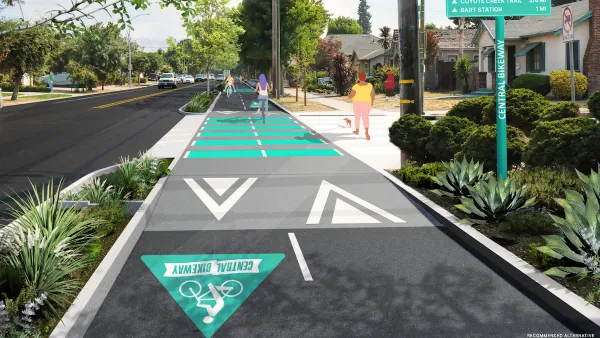Loosening restrictions on clean light manufacturing can revive dormant storefronts and revitalize communities.

Even before the pandemic’s impact on commerce, brick-and-mortar retail spaces were seeing lower demand. Rather than leave them as boarded-up vacant storefronts until new tenants move in, some cities are adjusting their zoning codes to make retail spaces more available to uses such as light manufacturing.
Writing in Governing, Ilana Preuss explains, “Small-scale manufacturers create products — from hardware to handbags to hot sauce — that typically are sold both in retail shops and online and are thus not solely dependent on foot traffic for revenue. That makes them well suited to neighborhoods and business districts seeking to revitalize from significant commercial-space vacancies.”
Recently, New York City became the first major city to loosen its zoning regulations on small-scale manufacturing in all commercial corridors, eliminating costly and time-consuming permitting processes.
“Today’s appeal and demand for small-scale manufacturing businesses is strengthened further by the fact that they often combine production facilities with a retail store and even entertainment space. That enables them to play a more enhanced role in the civic life of their communities.” For Preuss, including “small clean production businesses” in more neighborhoods can be a catalyst to economic development and community vitality.
FULL STORY: Empty Storefronts? Let Entrepreneurs Make Things There.

Planetizen Federal Action Tracker
A weekly monitor of how Trump’s orders and actions are impacting planners and planning in America.

Silicon Valley ‘Bike Superhighway’ Awarded $14M State Grant
A Caltrans grant brings the 10-mile Central Bikeway project connecting Santa Clara and East San Jose closer to fruition.

Amtrak Cutting Jobs, Funding to High-Speed Rail
The agency plans to cut 10 percent of its workforce and has confirmed it will not fund new high-speed rail projects.

California Set to Increase Electric Truck Chargers by 25%
The California Transportation Commission approved funding for an additional 500 charging ports for electric trucks along some of the state’s busiest freight corridors.

21 Climate Resilience Projects Cancelled by the EPA
The federal government has pulled funding for at least 21 projects related to farming, food systems, and environmental justice to comply with one of Trump’s early executive orders.

Trump Executive Order on Homelessness Calls for Forced Institutionalization
The order seeks to remove legal precedents and consent decrees that prevent cities from moving unhoused people from the street to treatment centers.
Urban Design for Planners 1: Software Tools
This six-course series explores essential urban design concepts using open source software and equips planners with the tools they need to participate fully in the urban design process.
Planning for Universal Design
Learn the tools for implementing Universal Design in planning regulations.
Yukon Government
Caltrans
New Jersey Institute of Technology
Mpact (founded as Rail~Volution)
City of Camden Redevelopment Agency
City of Norman, Oklahoma
City of Portland
City of Laramie





























